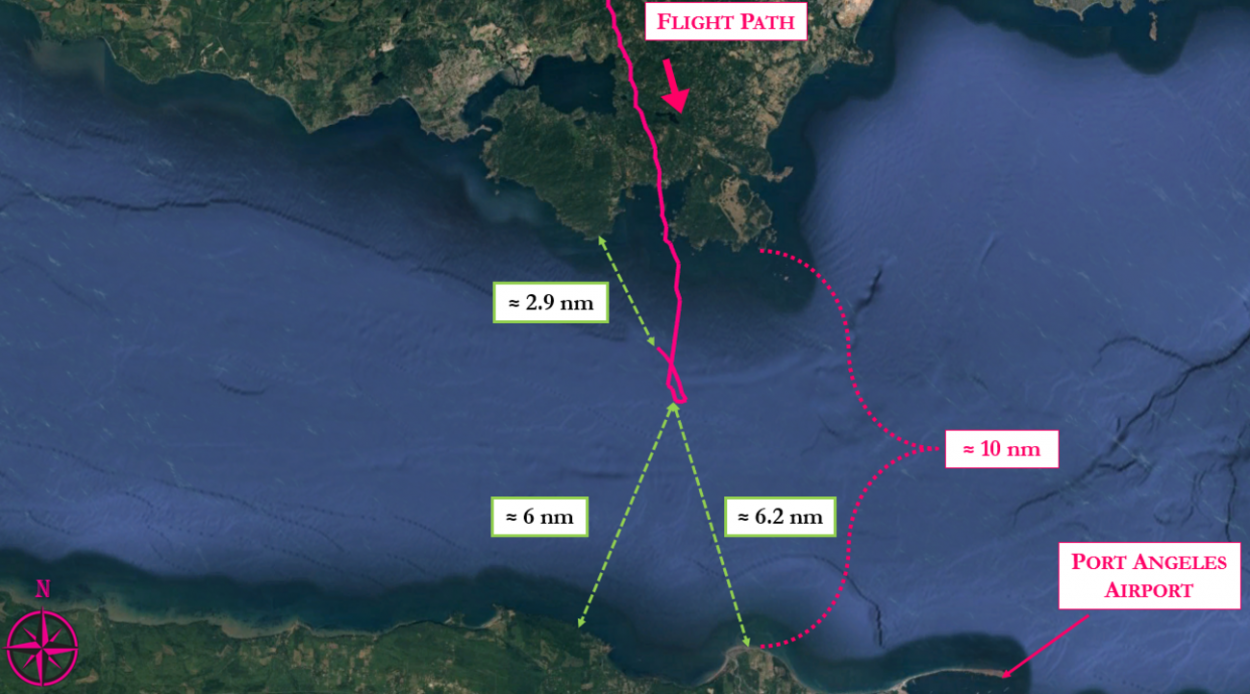
The NTSB says a review of the radar data revealed that the plan was on a southerly track, reaching the edge of the northly land mass at 4:34 p.m. local time. The radar hits continued south at an altitude of about 1,200 ft. About four minutes later, the plane reversed course and heading north-northeast. (Image courtesy of NTSB)
The Kodiak man killed while trying to pilot his small plane from Ketchikan to the Lower 48 had apparently run out of fuel a few miles from an airport. That’s according to federal aviation investigators who on Thursday released preliminary findings of the fatal January 26 crash near Port Angeles, Washington.
Authorities haven’t named the pilot of the Cessna 170A. But the aircraft’s registration and family speaking to the Kodiak Daily Mirror identified the plane’s owner and pilot as 38-year-old Sean M. Hayes of Kodiak.
The National Transportation Safety Board says the pilot had taken off from Kodiak the day before and had stopped in Ketchikan to refuel.
It says he’d sent multiple text messages to his mother indicating strong headwinds and dense cloud cover over the inside passage. Those were slowing his progress and he was worried that the plane had enough fuel.
“The pilot stated that his estimated time of arrival kept changing on his GPS because of the fluctuating wind, turbulence and cloud avoidance,” the four-page report said.
The report says the pilot reversed course and started to slowly descend around 1,200 feet. He broadcast a mayday call around 4:40 p.m. saying he was “ditching” the aircraft and could see a boat towing a barge. The NTSB says he’d texted a photo to his mother of the area which radar records indicated was less than three miles from the closest land.
Coast Guard vessels from the U.S. and Canada used infrared cameras and radar to search for the lost plane over two days. By the end searchers scoured nearly 1,200 square miles before calling off their effort without finding the plane.
The NTSB says the pilot’s final destination was Lake Havasu, Arizona.





